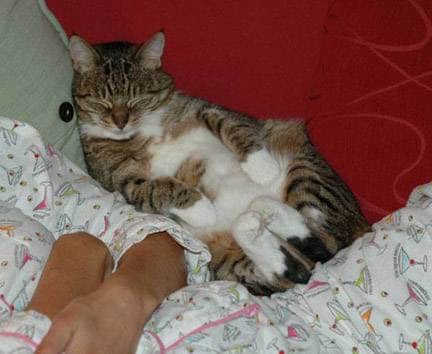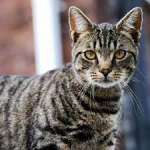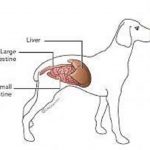Cholangitis and Cholangiohepatitis in Cats
Cholangitis (inflammation of the bile ducts) and cholangiohepatitis (inflammation of the bile ducts and the liver) are common problems in cats. Cats with cholangitis do not usually appear ill; cats with cholangiohepatitis usually appear ill.
Cause
The two main causes of cholangitis and cholangiohepatitis are a bacterial infection (pancreatitis, enteritis) or an immune-mediated disease.
Breed/Sex Predisposition
All breeds of cats can be affected, although Himalayan, Persian, and Siamese cats seem to be afflicted more frequently. Male cats seem to have acute cholangiohepatitis more often than do females.
Signs
The clinical signs are variable. The most common sign is anorexia, but fever, depression, vomiting, diarrhea, and weight loss can also occur.
Diagnosis
Diagnosis can be difficult. Blood tests (CBC, blood chemical analysis), radiographs, ultrasonography, fine-needle aspirate, and liver biopsy are usually required.
Treatment
Treatment is based on the underlying cause and often includes antibiotics, steroids, and Actigall. (Actigall reestablishes bile flow.) The drugs may need to be given for months. Cats with poor appetites may need IV fluid therapy, nutritional supplements, and dietary changes. The inciting cause will need to be treated at the same time. If the bile duct is obstructed, it may need to be cleared surgically.
Prevention
There is no way to prevent cholangitis/
Prognosis
The liver has the capability of regenerating itself, if given enough time, and many pets with liver disease recover. The prognosis for pets with cholangiohepatitis caused by a bacterial infection is good, if pets are given appropriate long-term treatment. The prognosis for pets with immune-mediated disease, particularly if the case is advanced, is not as good.
Please note that triaditis is the term used for the combination of cholangiohepatitis, pancreatitis, and inflammatory bowel disease (IBD). Eighty-three percent of cats with cholangiohepatitis also have inflammation of the duodenum and/or jejunum. Fifty percent of cats with cholangiohepatitis have pancreatic lesions. Inflammatory bowel disease may cause bacterial invasion of the common bile duct, resulting in pancreatitis and cholangiohepatitis. Despite the high incidence of inflammation in the small intestine, diarrhea is not a frequent finding in cats with cholangiohepatitis.
Urban Animal Veterinary Hospital
1327 Yale St
Houston, TX 77008
(713) 863-008


